Transcript of a briefing by Eleanor Draxynnus in preparation for a Canthan expedition, 1335AE.
Hello, everyone! I’ll give you another minute to settle in and for the stragglers to come in.
As you probably already know – you’re here, after all! – Steward Gixx has asked for a review on Canthan wildlife, mundane or otherwise, in preparation for an expedition to the continent. Today, I’ll be telling you about the kirin!
Like many of Cantha’s sapient beings, kirin were regarded as being genuinely peaceful and friendly prior to the Jade Wind. They were possibly viewed as guardians, looking after the land and the people who lived there as long as the people respected the land – at least, that seems to be consistent with reports of the few uncorrupted kirin that remained there during the expeditions of 1082 and 1089AE. Unfortunately, so many kirin were corrupted by the Jade Wind and the Affliction, that they have since become regarded as a symbol of corruption, particularly that of the pure-hearted turned to violence. Most notably, the kirin became the celestial representation of Kaijon Don, a once-famous healer who was consumed by a drive for vengeance after being assaulted by the leader of a criminal gang.
Naturally, we don’t know how this corruption has progressed in recent centuries, so any kirin should be treated with caution – it might be an ally, but it might also attack you on sight if they remain corrupted or perceive you as threatening their territory. To aid in recognition, we have some artist’s impressions of both corrupted and uncorrupted kirin. We’ll start with the latter.
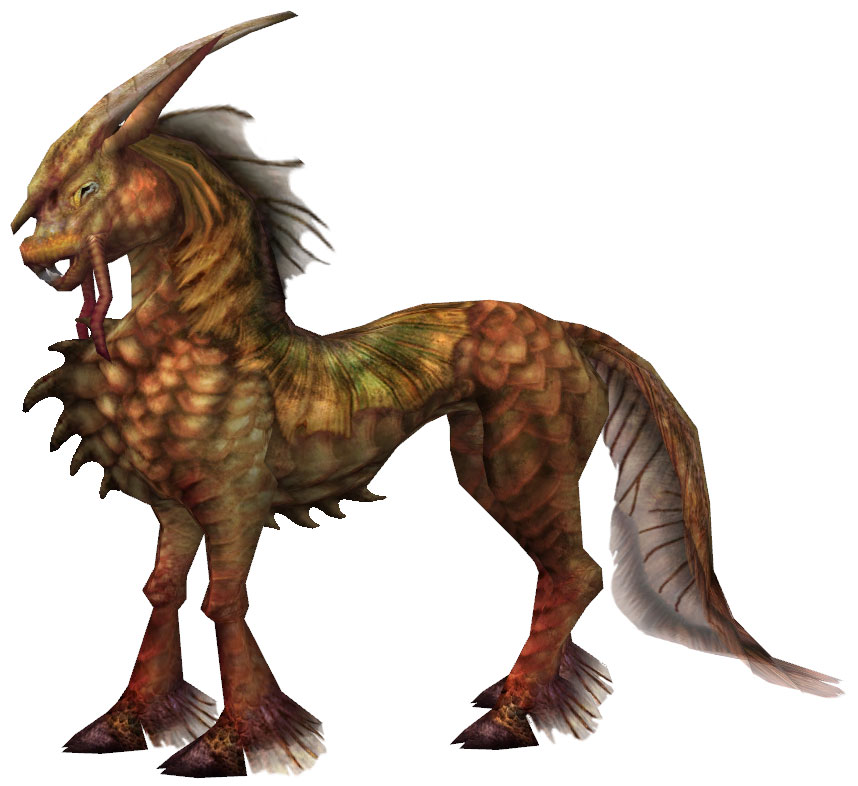
As you can see, uncorrupted kirin appeared similar to a horse or deer, but with golden, fishlike scales, a wide, flat tail, and a catfish-like mouth and barbels. In addition to long ears, they sported a large horn extending from their brow over the back of their head, and a row of smaller horns down the center of their chest. Reportedly, they could engage in physical combat by lashing out with their hooves, but they were better known for their magical abilities than their physical prowess, striking foes around them with smiting magic while employing protective and healing magic to outlast their attackers.
These uncorrupted kirin were rarely seen unless they chose to be seen, usually on auspicious occasions, or were summoned; suggesting that they might normally dwell in the Mists. One of these was encountered by the Tyrians who accompanied Mhenlo to assist in fighting against Shiro’s affliction. When the heroes sought to complete the trials of Weh no Su in order to be able to perceive Shiro’s spirit form and fight him on equal terms, the appearance of a kirin when the heroes arrived signified their worthiness to attempt the trials. Without this unnamed kirin’s implicit endorsement, it is unlikely that the guardians would have allowed foreigners to pass.
The most notable, however, was Zunraa, the guardian of the sacred valley of Zen Daijun. Prior to their rendezvous with Mhenlo’s expedition, Master Togo and some of his students called upon Zunraa’s aid to cleanse Shiro’s miasma that had spread through the valley through ringing sacred bells, like this one here:
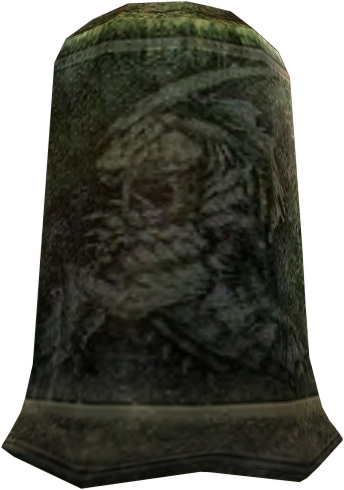
Zunraa completed this by passing through the clouds of miasma. Unfortunately, it appeared that Zunraa simply absorbed the miasma and was corrupted in turn, as corrupted kirin started to appear in the valley shortly afterwards. During the Ministry of Purity’s campaign to cleanse the last of Shiro’s corruption, adventurers hired by the Ministry used the same bells to summon five corrupted aspects of Zunraa and defeat them. It is not clear whether doing so cleansed the corruption from Zunraa, or whether this proved fatal for the guardian kirin.Tyrians who were part of this squad reported that the corrupted aspects of Zunraa had tarnished, almost black, scales and were covered with a green corruption. This description seems to match that of Stone Scale kirin, the corrupted kirin of Echovald Forest. Here’s an artist’s depiction of how they were said to appear:
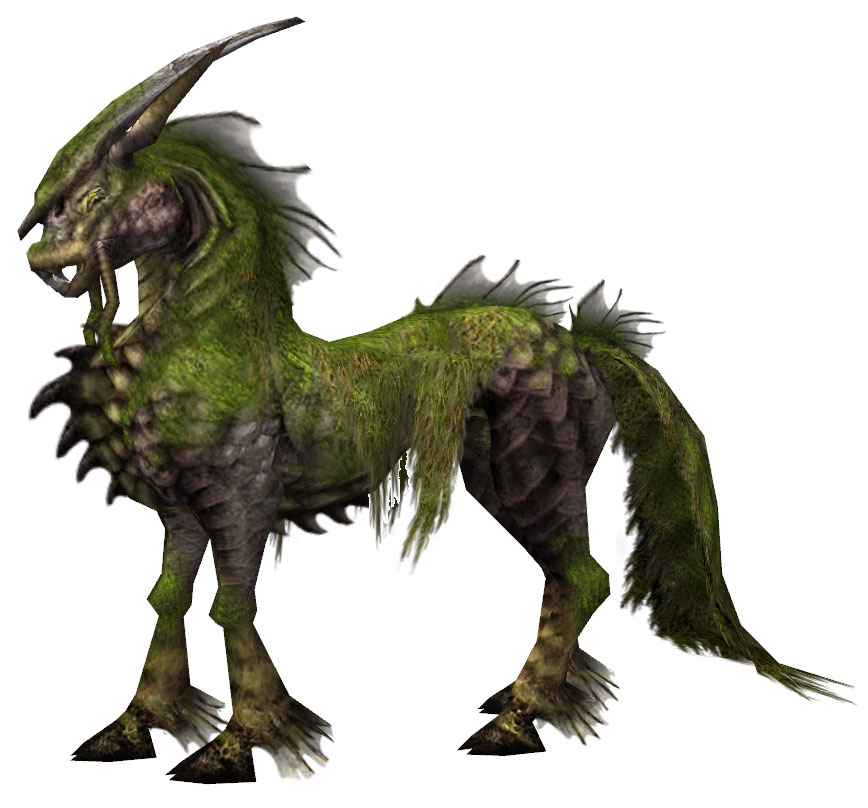
As you can see, the scales of these kirin have darkened to the colour of stone – accounts are unclear over whether the scales had actually been petrified, or whether the colour was sufficient to earn the name. Either way, the effect is to make them look as if they had been affected by the Jade Wind, in the same way that the trees were when it passed through their forest, but survived the process. Completing this effect are reports that most Stone Scale kirin had mats of moss or other foliage growing on their backs. Their magics had also changed – while uncorrupted kirin are associated with magics of purification, protection, and healing, Stone Scale kirin were known for spreading corruption, curses, and disease. If you have reason to think that you might find yourself in battle against Stone Scale kirin, it would be wise to bring appropriate cleansing means to protect against this.
The kirin of the Jade Sea demonstrated a similar trend of the physical corruption of the kirin resembling that of their environment, as you can see here:
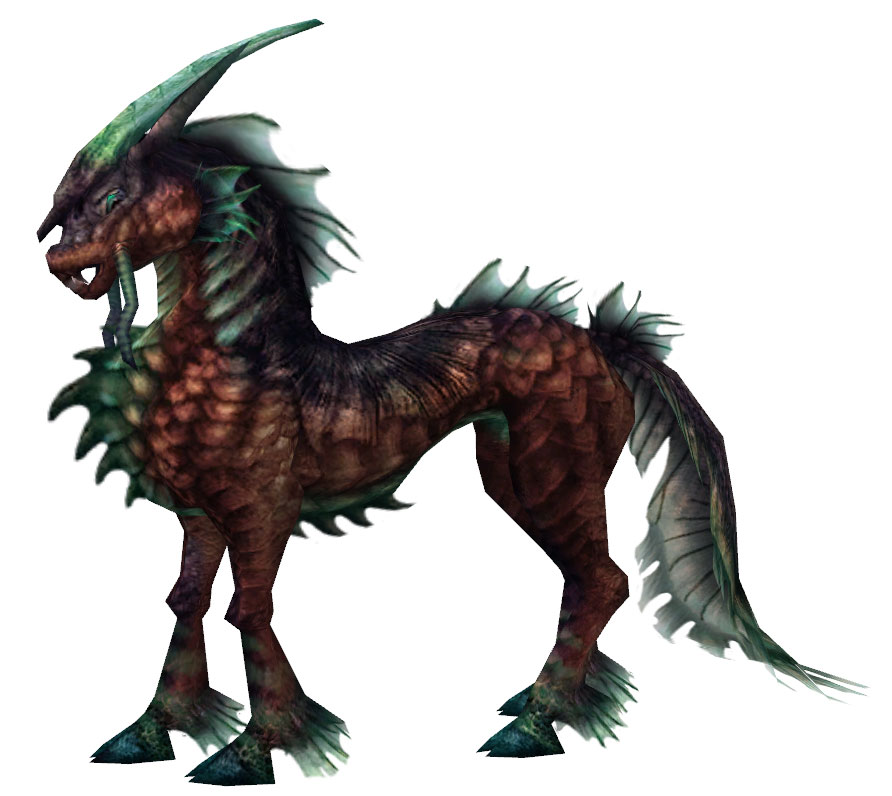
Instead of turning to stone, their scales turned a coppery red – other features such as their horns, barbels, tail, and frills, however, were the colour of jade. Unlike the Stone Scale kirin who’s magics attacked the body, the corrupted kirin of the Jade Sea employed magics that attacked the mind and magic of their victim. Spellcasters in particular should be wary when faced with one, as they were reportedly experts at turning their victim’s magics against the user.
Both types of corrupted kirin were reported to be wandering their respective regions in packs, attacking any human they came across, although some reports claimed they acted in concert with other creatures in the region. Interestingly, reports also suggested that kirin packs could be seen at some distance, including when the kirin were unaware of the observer. If uncorrupted kirin did, indeed, spend most of their time in the Mists, the corrupted kirin either lost this ability, or did not think to employ it in order to ambush travelers.
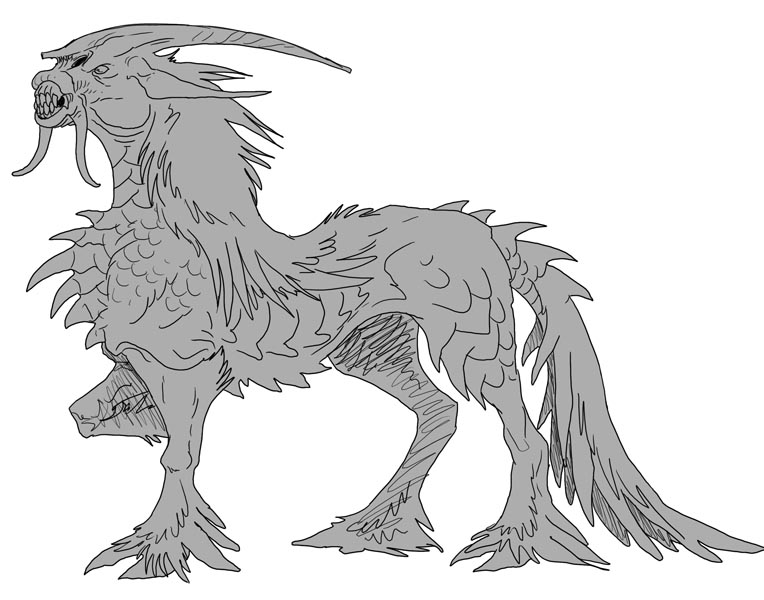
I should stop to note here that we have no records of what uncorrupted kirin of the Echovald Forest and Jade Sea might have looked like. Since kirin in both regions reflected the changes wrought on their environment by the Jade Wind, it is possible that all kirin somewhat reflect the region they are present in, and the description and image of uncorrupted kirin I gave earlier only covers kirin present in the relatively settled areas of Shing Jea and Kaineng. An uncorrupted kirin encountered elsewhere might thus have a different appearance. Any Pact member encountering a kirin should, therefore, act with caution – to protect themselves in case of attack, but also to avoid provoking a creature that might otherwise be friendly.
On that matter, as a word of caution, you should also be aware that given that kirin appear to be able to undergo significant physical and magical changes as described above, in the centuries since we last had contact, it is possible that further changes have occurred, especially if some of the corruption of the Stone Scale and Jade Torn kirin has worn off. The basic physical shape does not change, but appearances and magical abilities might otherwise vary widely. I have, for instance, come across references towards kirin being associated with water, as Saltspray dragons, Rockhide dragons, and phoenixes are associated with air, earth, and fire respectively. This could imply the existence of a water-type kirin, possibly the progenitor of the Jade Torn kirin of the Jade Sea before being corrupted, with an unknown appearance and possibly having water-based powers. Again, we recommend caution when dealing with all kirin, but particularly with kirin that do not appear to be one of the varieties above: a friendly kirin may be a valuable ally, but you should be ready to face unprovoked aggression from any kirin until communication is established.
Any questions?

